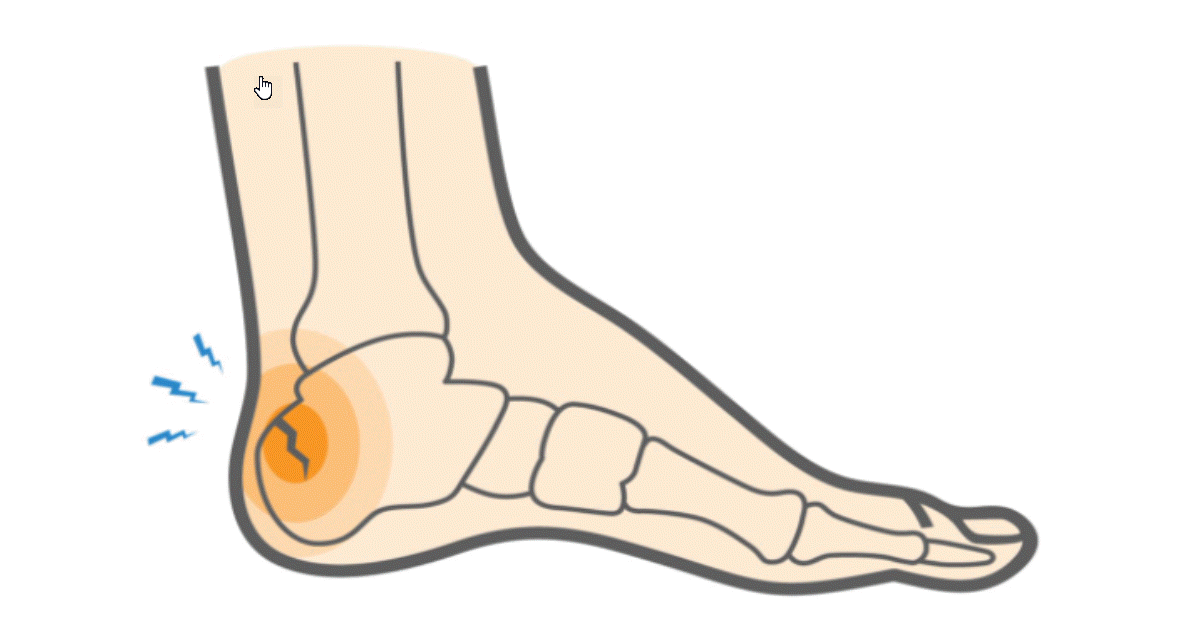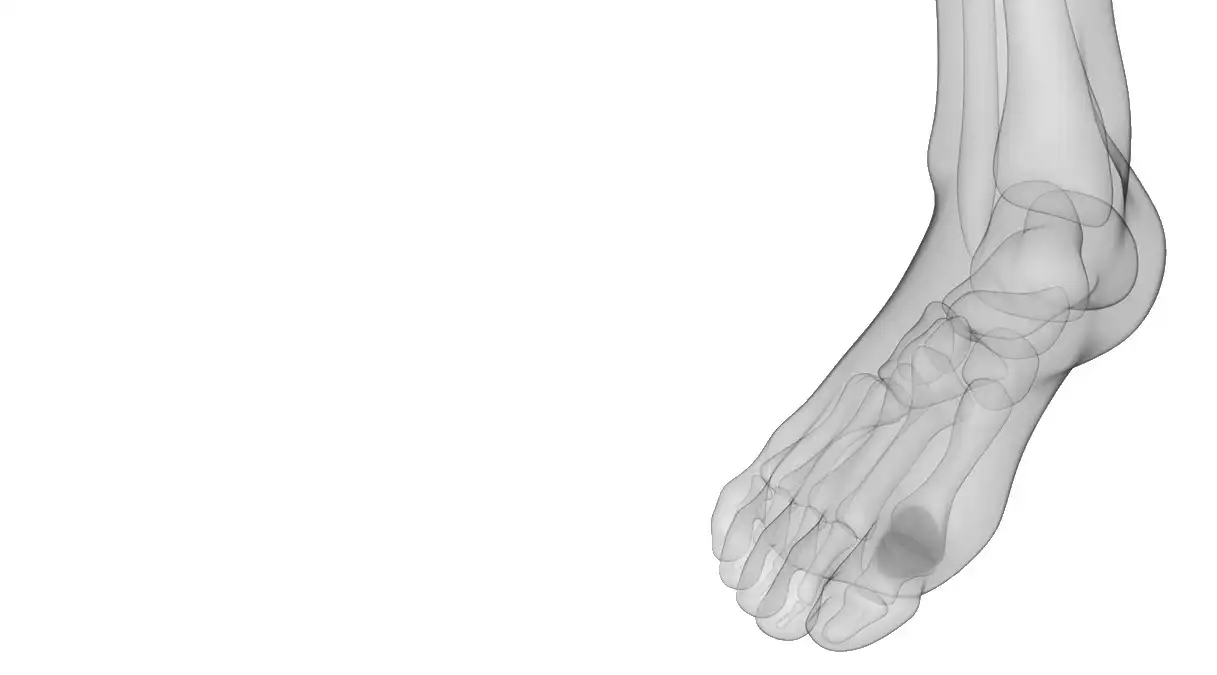Charcot foot is caused because of diabetes, which has resulted in bone deformity and loss of its supporting function. This condition is thought to be the result of repetitive injuries, usually a series of microtraumas of which a person may be barely or even completely unaware.
Charcot-Marie-Tooth disease was first described in 1868 by Jean-Martin Charcot, a French pathologist and neurologist.

Diabetes is a condition that affects 9% of the population, who have high blood sugar levels. The blood vessels of the foot are damaged due to the following two mechanisms: .
First, poor blood circulation to the nerves alters the sensitivity of the feet, making diabetics less likely to perceive cuts or other injuries. Second, poor blood flow to the skin and foot in general makes it difficult for wounds to heal. As a result, patients with diabetes are both more likely to have wounds and less likely to heal them properly. Wounds that do not heal provide an opportunity for bacteria to enter the foot, resulting in diabetic foot infections.
System affect
Nervous system
Nerve damage (neuropathy) leads to a loss of sensation in the foot. It will be more difficult to feel if something has irritated or pierced the skin. A simple wound (blister) can develop into a serious injury in a short time.
Circulatory system
Damaged blood vessels cause poor circulation to the foot which will cause the bones of the foot to disintegrate. The foot is more likely to fracture. A diabetic who has lost feeling in his or her feet will have a greater chance of fracturing the foot. A foot with diabetic neuropathy prevents feeling, will have almost no tactile sensation. A foot fracture will not be felt, and if a bone fractures at the tip, the fragment can cause chronic wounds.
If left untreated, Charcot foot can lead to severe deformity, disability or amputation.

Stages
Charcot-Marie-Tooth disease is characterized by four different stages of the disease that resemble active and inactive phases of the disease: inflammation, fragmentation, coalescence, consolidation.
Stage 1 – Fragmentation and destruction:
The foot is swollen and warm to the touch. Soft tissue swelling and small bone fractures begin to occur. Destruction of the joints and surrounding bones, causing loss of joint stability and dislocation. The bones may even become jelly-like, softening completely.
Stage 2 – Coalescence
The body attempts to repair the damage done during the first stage. Less swelling and inflammation during this destruction stop
Stage 3 – Reconstruction
Wounds heal, but the foot has lost its original shape. The foot will have contact with the ground which may cause ulcers, increasing the possibility of amputation.
Complications
- Foot deformities such as flat foot, hammertoes, equinus foot.
- Bony prominences that can lead to ulceration, infection and, in some cases, loss of limb (amputation) or death.
- Recurrence of the Charcot joint
- From the first diagnosis of acute Charcot, the 5-year mortality rate is 13%, which is similar to diabetics without Charcot.
References
- Kampen WU, Westphal F, Van den Wyngaert T, Strobel K, Kuwert T, Van der Bruggen W, Gnanasegaran G, Jens JH, Paycha F. SPECT/CT in Postoperative Foot and Ankle Pain. Semin Nucl Med. 2018 Sep;48(5):454-468. [PubMed]
- Figueiredo A, Ferreira R, Alegre C, Fonseca F. Charcot osteoarthropathy of the knee secondary to neurosyphilis: a rare condition managed by a challenging arthrodesis. BMJ Case Rep. 2018 Aug 20;2018 [PMC free article] [PubMed]
- Dixon J, Coulter J, Garrett M, Cutfield R. A retrospective audit of the characteristics and treatment outcomes in patients with diabetes-related charcot neuropathic osteoarthropathy. N Z Med J. 2017 Dec 15;130(1467):62-67. [PubMed]
- Zhao HM, Diao JY, Liang XJ, Zhang F, Hao DJ. Pathogenesis and potential relative risk factors of diabetic neuropathic osteoarthropathy. J Orthop Surg Res. 2017 Oct 02;12(1):142. [PMC free article] [PubMed]
- Sinacore DR, Bohnert KL, Smith KE, Hastings MK, Commean PK, Gutekunst DJ, Johnson JE, Prior FW. Persistent inflammation with pedal osteolysis 1year after Charcot neuropathic osteoarthropathy. J Diabetes Complications. 2017 Jun;31(6):1014-1020. [PMC free article] [PubMed]
- Trieb K. The Charcotfoot: pathophysiology, diagnosis and classification. Bone Joint J. 2016 Sep;98-B(9):1155-9. [PubMed]
- Miller RJ. Neuropathic Minimally Invasive Surgeries (NEMESIS):: Percutaneous Diabetic Foot Surgery and Reconstruction. Foot Ankle Clin. 2016 Sep;21(3):595-627. [PubMed]
- McInnes AD. Diabetic foot disease in the United Kingdom: about time to put feet first. J Foot Ankle Res. 2012 Oct 11;5(1):26. [PMC free article] [PubMed]9.Kaynak G, Birsel O, Güven MF, Oğüt T. An overview of the Charcotfoot pathophysiology. Diabet Foot Ankle. 2013;4 [PMC free article] [PubMed]
- McEwen LN, Ylitalo KR, Herman WH, Wrobel JS. Prevalence and risk factors for diabetes-related foot complications in Translating Research Into Action for Diabetes (TRIAD). J Diabetes Complications. 2013 Nov-Dec;27(6):588-92. [PMC free article] [PubMed]
- O’Connell JX, Nielsen GP, Rosenberg AE. Subchondral acute inflammation in severe arthritis: a sterile osteomyelitis? Am J Surg Pathol. 1999 Feb;23(2):192-7. [PubMed]
- Sybenga AB, Jupiter DC, Speights VO, Rao A. Diagnosing O
























